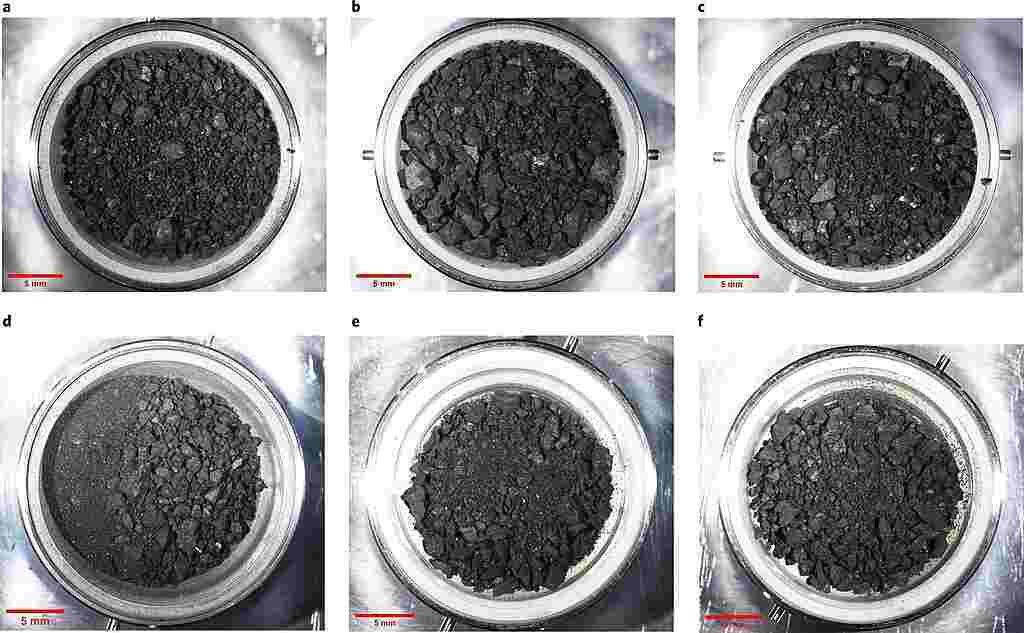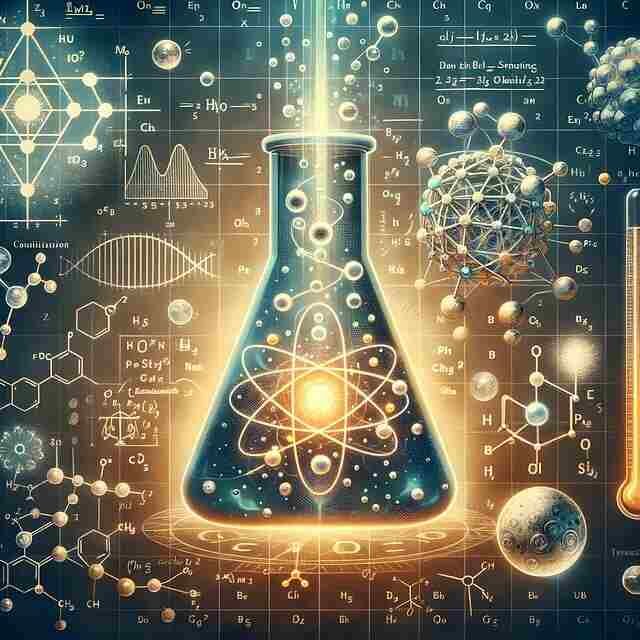Particle Physics
Particle physics is the branch of physics that studies the elementary constituents of matter and radiation, as well as their interactions. It is also called high-energy physics because many elementary particles do not exist in nature and can only be detected in high-energy collisions between larger particles in particle accelerators.
Examples of Particle physics
- atomic particles : molecule atom ion ( cation anion )
- subatomic particles : atomic nucleus
- fermions :
- quarks : upquark downquark charmquark strangequark topquark bottomquark
- leptons : electron positronneutrino ( electron neutrino muon neutrino tau neutrino ) antineutrino ( electron antineutrino muon antineutrinotau antineutrino ) muon antimuon tau antitau
- bosons : photon, gluon, W boson, Z boson, higgs boson
- hadrons :
- baryons : nucleon ( proton antiproton neutron antineutron)hyperon
- mesons : kaon · pion · J/ψ-meson
- other: tetraquark · pentaquark
- hypothetical : superpartner, graviton Majorana particle neutralino oh – my – God particle planck particle preon tachyon
1. Atomic particles
Atoms (Ancient Greek: ἄτομος, atomos ‚ indivisible) are the smallest particles into which matter can be divided by chemical methods. An atom is unimaginably small; there are more atoms in a glass of water than glasses of water in all the oceans on earth . Atoms are the smallest building block of any chemical element.
All atoms of a given element have the same atomic number : they contain the same number of protons . Neutral atoms have an equal number of electrons and protons. An ion is a charged atom that has a shortage or a surplus of electrons. Atoms of the same element can differ in atomic mass because the number of neutrons in the atomic nucleus can vary. Such atoms are isotopes of each other. Atoms of different elements are essentially different from each other. The material properties of substances and materials, and their behavior in chemical reactions, are determined by the properties and interrelationships of the atoms that make up matter.
Molecule
A molecule or molecule is the smallest part of a molecular substance that still has the chemical properties of that substance. If a molecule were to be broken up into even smaller particles, its chemical properties would change.
A molecule is made up of atoms that are linked together in a fixed arrangement of chemical bonds . A chemical is defined by the atoms that make up the molecule and the chemical bonds that exist between the atoms.
The mass of a molecule, or molar mass , is equal to the combined mass of the atoms that make up the molecule. Molecular mass is expressed in atomic mass units (represented as u (unit)). Expressed in kilograms, this is:
1 h ≈ 1.6605402 × 10 −27 kg.
The dimensions of molecules are on the order of nanometers (1 nm = 1 × 10 −9 m, one millionth of a millimeter ).
Atoms
Atoms (Ancient Greek: ἄτομος, atomos ‚ indivisible) are the smallest particles into which matter can be divided by chemical methods. An atom is unimaginably small; there are more atoms in a glass of water than glasses of water in all the oceans on earth . Atoms are the smallest building block of any chemical element.
All atoms of a given element have the same atomic number: they contain the same number of protons . Neutral atoms have an equal number of electrons and protons. An ion is a charged atom that has a shortage or a surplus of electrons. Atoms of the same element can differ in atomic mass because the number of neutrons in the atomic nucleus can vary. Such atoms are isotopes of each other. Atoms of different elements are essentially different from each other. The material properties of substances and materials, and their behavior in chemical reactions , are determined by the properties and interrelationships of the atoms that make up matter.
Physicists assume an atomic model in which atoms consist of three kinds of smaller, subatomic particles: protons, neutrons, and electrons. These particles can also occur separately, outside the atom. Almost all chemical and physical properties of matter occurring on earth are linked to the properties of atoms. The atom is therefore a key concept in both sciences. The physical properties of individual atoms, disregarding chemical substance properties , are studied in atomic physics.
For example , stars , neutron stars and black holes contain matter that is not made up of atoms. The study of these special forms of matter form the field of plasma physics and astrophysics.
2. Subatomic particle
A subatomic particle is a particle smaller than the atom. Some subatomic particles can be part of atoms, others are formed only in stars , in the laboratory, or in other extraordinary circumstances. The particles are smaller than 1 fm or Femtometre (10 −15 m). They are studied by particle physics.
Atomic nucleus
The atomic nucleus is the central part of the atom that contains most of the matter that makes it up but which, however, occupies a relatively small volume. It is formed by baryons, specifically by protons and neutrons , in variable numbers, but always more neutrons than protons. An exception is the nucleus of ordinary hydrogen (formed by a single proton) and those of the lighter atoms, in which the number of protons and neutrons is usually equal.
The number of protons is called the atomic number and is the parameter that determines which chemical element corresponds to the atom. The number of neutrons of atoms of the same element can be variable: nuclei with the same atomic number, but different number of neutrons, are called isotopes.
The force that holds together the baryons that make up the atomic nucleus, which are called nucleons , is the strong nuclear force.
Some atoms spontaneously decay through radioactive processes that consist of the emission of highly energetic electrons (beta rays) or helium nuclei (alpha rays). Some nuclei are extremely stable, while others decay very quickly. The stability of an atomic nucleus depends on the total number of nucleons (elements with atomic numbers greater than lead are all radioactive and lead and those with lower atomic numbers usually are not) and also on the ratio between number of protons and neutrons: that is why in the same element, different isotopes can have an average life different.
3. Fermion
A fermion , named after the Italian physicist Enrico Fermi , is a particle characterized by a half-integer spin (s=1/2, s=3/2, s=5/2, …). This is in contrast to bosons , which always possess an integer spin. Each subatomic particle of the Standard Model can be classified into one of these two types. Since fermions possess half-integer spin, they obey the Pauli Pauli exclusion principle , meaning that two fermions cannot have exactly the same quantum numbers . This principle ensures, among other things, the stability of electron shells. More generally, fermions satisfy the Fermi–Dirac distribution .
Elementary fermions, which are fermions that no longer consist of other subatomic particles, i.e. elementary particles, can be further subdivided into leptons (e.g. electron , muon ) and quarks (the elementary building blocks of hadrons ). They are the building blocks of matter . Their spin is a half. In addition to elementary fermions, there are also compound fermions; for example, the proton and the neutron.
Elemental bosons transfer forces between the elemental fermions.
Quarks
In particle physics, quarks are the massive elementary fermions that strongly interact to form nuclear matter and certain types of particles called hadrons. Along with leptons, they are the fundamental constituents of baryonic matter. Various species of quarks combine in specific ways to form subatomic particles such as protons and neutrons.

Six of the Standard Model particles are quarks (in purple). Each of the first three columns forms a generation of matter. Cush, Public domain, via Wikimedia Commons
Quarks are the only fundamental particles that interact with all four fundamental forces. They are spin 1/2 particles, and they are Dirac fermions so their corresponding antiparticles exist.
4. Boson particle
A boson, named after Satyendra Nath Bose, is an elementary particle that possesses an integer spin (0, 1, 2, …). This is in contrast to a fermion, which has half-integer spin (1/2, 3/2, 5/2, …).
The following particles are bosons:
- the gauge bosons that carry the four fundamental forces of nature :for the electromagnetic force the photon
- for the weak nuclear force the W boson and the Z boson
- for the strong nuclear force the gluon
- for gravity the (not yet proven) graviton
- the higgs boson
- composite particles with an even number of fermions , e.g. mesons.
The bosons that are not composed are elementary particles in the Standard Model of particle physics . A special boson is the Higgs boson. It is not compound, so part of the Standard Model, and would be responsible for the mass of the elementary particles.
Bosons, unlike fermions, can be in the same quantum state and are found not to obey the Pauli exclusion principle. Bosons conform to Bose-Einstein statistics and therefore have special properties, such as being able to form a Bose-Einstein condensate.
An example of this is the Helium-4 (4He). This is a boson, because it consists of an even number of fermions. At very low temperatures, the helium becomes superfluid . In this curious state, the liquid has no viscosity and no surface tension. A cup with superfluid helium can therefore empty without apparent reason because the helium creeps over the edge to find the lowest energy state .
Bosons also play a role in superconductivity , where two electrons combine to form a boson: a Cooper pair.
5. Hadron
A hadron is a subatomic particle made up of quarks. These quarks are held together by mutual exchange of gluons . The name is derived from the Greek hadros , meaning strong . This is because the gluons represent the strong nuclear force.
There are two categories of hadrons:
- Baryons (such as protons and neutrons). These consist of three quarks, have half-integer spin and are therefore fermions.
- Mesons (such as pions and kaons). These consist of a quark and an antiquark, have an integer spin and are therefore bosons.
Most of a hadron’s mass consists of potential and kinetic energy. For example, a proton (invariant mass 938 MeV/c 2 ) contains two up quarks (2×3 MeV/c 2 ) and a down quark (6 MeV/c 2 ). The remaining mass is energy according to Einstein ‘s formula E = mc 2.
The mass of the universe consists of four percent hadrons. 23% is dark matter and 73% is dark energy, according to results from the WMAP (Wilkinson Microwave Anisotropy Probe).
Other: tetraquark and pentaquark
Tetraquark
In particle physics, a tetraquark is a hypothetical exotic meson , made up of four quarks. Tetraquarks, if they exist, lie outside the quark model. The first candidate tetraquark was proposed in 2003 in Japan. The particle then proposed would have a mass of 3872 mega electron volts.
Later, in 2007, the Z(4430) particle was proposed, which has a mass of 4430 megaelectron volts, and was observed in 2014 by the LHC. In 2010, two German physicists from DESY announced that there is a certain resonance in tetraquarks.
Pentaquark
A pentaquark is a subatomic particle made up of 5 quarks. The pentaquark is special because it would consist of 5 quarks, while the known hadrons consist of 2 or 3 quarks.
Evidence was found in 2003 that pentaquarks might exist. These clues were found by bombarding carbon atoms with high energy photons. Pentaquarks are “exotic” baryons and always consist of 4 normal quarks and 1 antiquark, e.g. 2 upquarks, 2 downquarks and 1 anti-strange quark. A pentaquark decays very quickly.
If a pentaquark really existed, this would be of enormous importance for quantum chromodynamics , this is a theory that describes why quarks always occur in groups.
6. Hypothesis
A hypothesis (from Ancient Greek : ὑπόθεσις (hypóthesis), assumption ) is in empirical science a proposition that has not (yet) been proven, and which serves as a starting point for an experiment or for a directed observation.
Superpartner
In particle physics, a superpartner (also sparticle) is a class of hypothetical elementary particles predicted by supersymmetry, which, among other applications, is one of the well-studied ways to extend the standard model of high-energy physics.
When considering extensions of the Standard Model, the s- prefix from sparticle is used to form names of superpartners of the Standard Model fermions (sfermions), e.g. the stop squark. The superpartners of Standard Model bosons have an -ino (bosinos) appended to their name, e.g. gluino, the set of all gauge superpartners are called the gauginos.
Majorana particle
A Majorana particle or Majorana fermion is a type of fermion that is its own anti-particle . The other type of fermion is called Dirac fermion, which is different from its anti-particle. So far, all fermions in the standard model of particle physics are Dirac fermions, except possibly the neutrinos, but they are also not Majorana fermions. There are several bosons that are their own anti-particle, such as the Z boson and the photon. In supersymmetry theory, the neutralino is its own anti-particle.
The term is also used when talking about quasiparticles. That is, many particles collectively behave in such a way that they possess the properties of a single particle and many others…
Sources: PinterPandai, CERN, UC Berkeley, EurekAlert – Advancement of Science (AAAS)
Photo credit: Cush, Public domain via Wikimedia Commons
Photo description: Elementary particle standard model: consists of 12 species of elementary fermions (particles of matter) and 12 species of elementary bosons (particles of radiation), and the corresponding antiparticles and Higgs boson.



